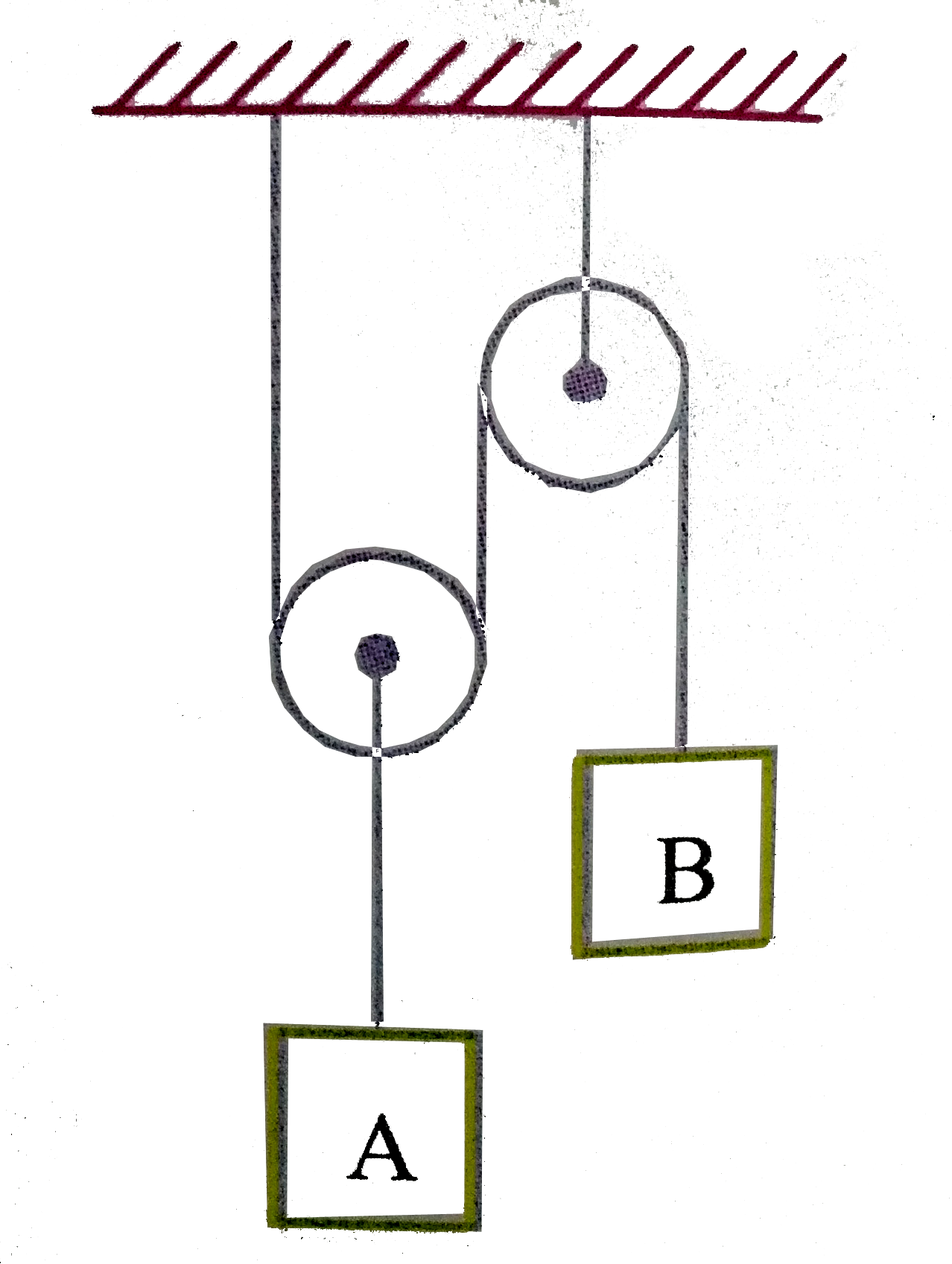Block A has a weight of 300 N and blcok B has weight of 50 N.Determine the distance B must raise from rest before. A obtains a speed of 2.5ms−1. Neglect the mass of cord and pulley?
 Solution in Telugu
Solution in Telugu
1.2m
1.5625m
1.8m
1m
The correct Answer is:A, B, C, D
Step by step video, text & image solution for Block A has a weight of 300 N and blcok B has weight of 50 N.Determine the distance B must raise from rest before. A obtains a speed of 2.5ms^(-1). Neglect the mass of cord and pulley? by Physics experts to help you in doubts & scoring excellent marks in Class 11 exams.
Updated on:21/07/2023Topper's Solved these Questions
- WORK -POWER-ENERGYBOOK - AAKASH SERIESCHAPTER - WORK -POWER-ENERGYEXERCISE - PRACTICE SHEET (EXERCISE-III CONSERVATIVE AND NON CONSERVATIVE FORCES) (LEVEL -I STRAIGHT OBJECTIVE TYPE QUESTIONS)
3 Videos
- WORK -POWER-ENERGYBOOK - AAKASH SERIESCHAPTER - WORK -POWER-ENERGYEXERCISE - PRACTICE SHEET (EXERCISE-III CONSERVATIVE AND NON CONSERVATIVE FORCES) (LEVEL -II MORE THAN ONE CORRECT ANSWER TYPE QUESTIONS)
11 Videos
- WORK -POWER-ENERGYBOOK - AAKASH SERIESCHAPTER - WORK -POWER-ENERGYEXERCISE - PRACTICE SHEET (EXERCISE-II KINETIC ENERGY, WORK-ENERGY THEOREM) (LEVEL-I STRAIGHT OBJECTIVE TYPE QUESTIONS)
7 Videos
- VISCOSITY BOOK - AAKASH SERIESCHAPTER - VISCOSITY EXERCISE - Questions for Descriptive Answers
3 Videos
- WORK POWER ENERGYBOOK - AAKASH SERIESCHAPTER - WORK POWER ENERGYEXERCISE - EXERCISE - 3
61 Videos
Similar Questions
Two bodies of masses 4 kg and 16 kg ar at rest. The ratio of times for which the same force must act on them to produce the same kinetic energy in both of them is
View SolutionA particle of mass 1 kg is moving along x-axis. It's velocity is 6m/sec at x=0. Acceleration (a), displace (x) curve and potential energy (u) -displacement (x) curve of the particle are shown.

View SolutionTwo sopheres whose radii are in the ratio 1:2 are moving with theier velocities in the ratio 3:4. If their densities are in the ratio 3:2, the ratio of their kinetic energies is
View SolutionAn iron sphere of mass 20×10−3 kg falls through a viscous liquid with terminal velocity 0.5 m/sec. Find the terminal velocity of another iron sphere of mass 54×10−2 kg.
View SolutionIf →A+→B=→Rand2→A+→B is perpendicular to →B then
View SolutionBlock A has a weight of 3000N and block B has a weight of 500N. Determine the distance that A must descend from rest before it obtains a speed of 2.5m/s. Neglect the mass of the cord and pulleys.
 .
.
View SolutionThe system is released from rest with the spring initally stretched 75 mm . Calculate the velocity v of the block afrer it has dropped 12 mm . The spring has a stiffness of 1050 N//m . Neglect the mass of the small pulley.
View SolutionBlock A has a weight of 3000 N and block B has a weight of 50 N . Coefficient of friction for A is mu_(k) = 0.2 . Determine the pseed of block A after moves 1 m down the plane, starting from rest. Negelect the mass of the cord and pulleys.
View SolutionBlock A has a mass of 5kg and is placed on top of a smooth triangular block, B having a mass of 30kg. If the system is released from rest, determine the distance, B moves when A reaches the bottom. Neglect the size of block A.

View SolutionBlock A of weight 100 N rests on a frictionless inclined plane of slope angle 30^(@) A flexible cord attached to A passes over a frictionless pulley and is connected to block B of weight W Find the weight W for which the system is in equilibrium .
View SolutionBlock A of weight 500 N and block B of weight 700 N are connected by rope pulley system as shown. The largest weight C that can be suspended without moving block A and B is W . The coefficient of friction for all plane surfaces of contact is 0.3 . The pulleys are ideal. Find (W)/(90) .
View SolutionBlock A has a weight of 300N and block B has weight 50N. Calculate the distance A must descent form rest before it obtains a speed of 4m/s (Neglect the mass of cord and pulleys). (Takeg=10m/s2).
 .
.
View SolutionBlock A weights 4 N and block B weights 8 N. The coefficient of kinetic friction is 0.25 for all surfaces. The force F to slide B at a constant speed, when A rests on B and moves with it, is
View SolutionIf the system is released from rest, determine the speeds of both masses after B has moved 1 m. Neglect friction, the masses of pulleys and inextensible string.
View SolutionAs shown in the given figure, two blocks are connected by a rope that passes over a set of pulleys. One block has a weight of 412 N, and the other has a weight of 908 N. The rope and the pulleys are massless and there is no friction. What is the acceleration of the lighter block ?
View Solution
